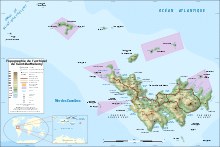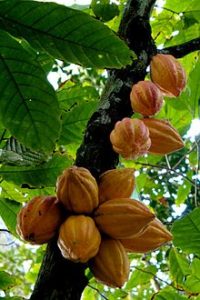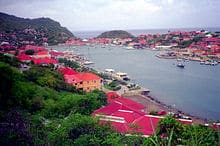Saint Barthélemy is an overseas collectivity of France in the West Indies, a constituent territory of Overseas France.

Often abbreviated to St-Barth in French or St. Barts in English, the island lies about 35 kilometres (22 mi) southeast of St. Martin and north of St. Kitts. Puerto Rico is 240 kilometres (150 mi) to the west in the Greater Antilles.
Long before European contact, it is possible that Saint Barthélemy was visited, although probably not permanently inhabited by the indigenous Taíno people.

In 1493 Christopher Columbus became the first European to visit the island. Columbus named it after his brother Bartolomeo. Saint Barthélemy would be visited only sporadically, likely because of the dry and scrubby nature of the island, lacking in fresh water for furnishing ships, over the next hundred years until formal colonization began taking shape.
By 1648, the island had attracted settlers from the nearby island of St. Christopher (St. Kitts), but this would be a short-lived endeavor as the settlement would be attacked and destroyed by the Caribs some six years later. These settlers were small in number, some 50-60 in total and they were cultivating cacao.

The ownership of the island was transferred from the Compagnie des Îles de l’Amérique to the Order of St. John. In 1665 Saint Barthélemy was bought by the French West India Company. By 1674, the company was dissolved and the island became part of the French Kingdom.
As happened frequently among the Caribbean islands of France, the British took over briefly in 1758. The French in turn gave Saint Barthélemy to Sweden in exchange for French trading rights in Gothenburg. With this transfer the island’s fortunes changed for the better. The Swedes ushered in a time of progress and prosperity as the Swedes declared Gustavia

a free port, which made it a favored port for the trading of European goods, including contraband items.
Slavery existed on St. Barthélemy until October 1847 when the last of the slaves were officially freed. Without plantations to work on, economic viability was negligible and the life of the former slaves was difficult.
Abiding by the results of a referendum in 1877, Sweden gave the island back to France in 1878. France proceeded to administer Saint Barthélemy as a part of Guadeloupe.
On 19 March 1946, the people of the island became French citizens with full rights but it was not until 1961 that the island was served by electricity. The introduction of this electric service allowed for the rapid growth of organized tourism and hotel building during the 1960s and 1970s. The completion of the landing strip greatly increased this development of the tourism sector.
By referendum in 2003, island residents sought separation from the administrative jurisdiction of Guadeloupe, and it was finally accomplished in 2007.
St. Barthélemy lies immediately southeast of the islands of Saint Martin and Anguilla. St. Barthélemy is separated from Saint Martin by the Saint-Barthélemy Channel. It lies northeast of Saba and St Eustatius, and north of St Kitts.
